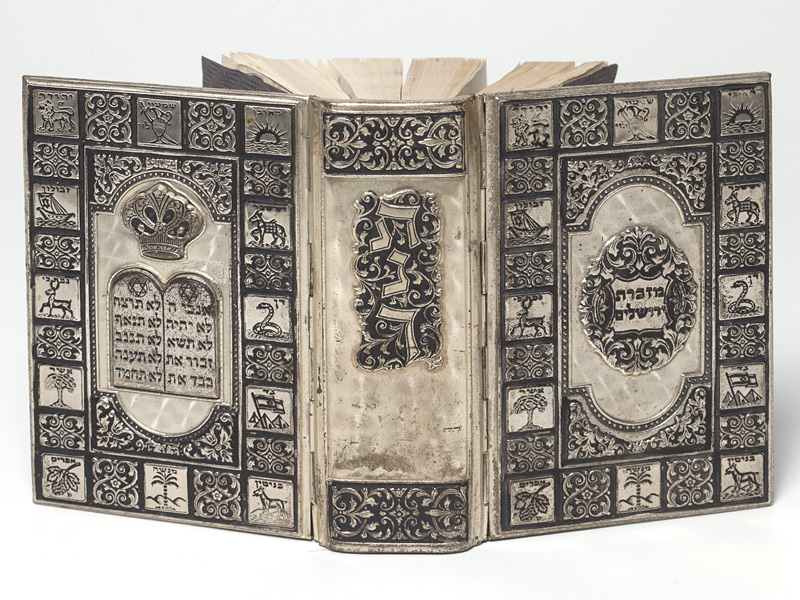|
Laments
A lament or lamentation is a passionate expression of grief, often in music, poetry, or song form. The grief is most often born of regret, or mourning. Laments can also be expressed in a verbal manner in which participants lament about something that they regret or someone that they have lost, and they are usually accompanied by wailing, moaning and/or crying. Laments constitute some of the oldest forms of writing, and examples exist across human cultures. History Many of the oldest and most lasting poems in human history have been laments. The Lament for Sumer and Ur dates back at least 4000 years to ancient Sumer, the world's first urban civilization. Laments are present in both the ''Iliad'' and the ''Odyssey'', and laments continued to be sung in elegiacs accompanied by the aulos in classical and Hellenistic Greece. Elements of laments appear in ''Beowulf'', in the Hindu Vedas, and in ancient Near Eastern religious texts. They are included in the Mesopotamian City Lament ... [...More Info...] [...Related Items...] OR: [Wikipedia] [Google] [Baidu] |
Treny Normal
The ''Laments'' (also '' Lamentations'' or ''Threnodies''; pl, Treny, originally spelled ''Threny'') are a series of nineteen threnodies (elegies) by Jan Kochanowski. Written in Polish and published in 1580, they are a highlight of Polish Renaissance literature, and one of Kochanowski's signature achievements.Poet's Corner: "Jan Kochanowski's ''Threnodies'' ", in '''', no. 43 (470) (October 26, 1997). Includes ''Threnody V''. "Jan KOCHANOWSKI , by Prof. Edmund Kotarski, in the ''Virtual Library of Polish Literature''. [...More Info...] [...Related Items...] OR: [Wikipedia] [Google] [Baidu] |
City Lament
A City Lament is a poetic elegy for a lost or fallen city. This literary genre, from around 2000 BCE onwards, was particularly prevalent in the Mesopotamian region of the Ancient Near East. The Bible's Book of Lamentations concerning Jerusalem around 586 BCE, contains some elements of a city lament. Features In the five known Mesopotamian City Laments, the lament is written in voice of the city's tutelary goddess. The destruction of the city, the mass killing of its inhabitants, and the loss of its central temple are vividly described. Special attention is given to the divine sphere, where the gods order the destruction of the city, the city patron gods implore against this, but in vain. The patron gods are exiled to live as deportees in foreign cites, lamenting their devastated shrine. Subsequently they return from exile and renew their former existence. Mesopotamia The Lament for Ur, or Lamentation over the city of Ur is a Sumerian lament composed around the time of the fall o ... [...More Info...] [...Related Items...] OR: [Wikipedia] [Google] [Baidu] |
Lament For Ur
The Lament for Ur, or Lamentation over the city of Ur is a Sumerian lament composed around the time of the fall of Ur to the Elamites and the end of the city's third dynasty (c. 2000 BC). Laments It contains one of five known Mesopotamian "city laments"—dirges for ruined cities in the voice of the city's tutelary goddess. The other city laments are: *The Lament for Sumer and Ur *The Lament for Nippur *The Lament for Eridu *The Lament for Uruk The Book of Lamentations of the Old Testament, which bewails the destruction of Jerusalem by Nebuchadnezzar II of Babylon in the sixth century B.C., is similar in style and theme to these earlier Mesopotamian laments. Similar laments can be found in the Book of Jeremiah, the Book of Ezekiel and the Book of Psalms, Psalm 137 (). Compilation The first lines of the lament were discovered on the University of Pennsylvania Museum of Archaeology and Anthropology catalogue of the Babylonian section, tablet numbers 2204, 2270, 230 ... [...More Info...] [...Related Items...] OR: [Wikipedia] [Google] [Baidu] |
Aulos
An ''aulos'' ( grc, αὐλός, plural , ''auloi'') or ''tibia'' (Latin) was an ancient Greek wind instrument, depicted often in art and also attested by archaeology. Though ''aulos'' is often translated as "flute" or " double flute", it was usually a double-reeded instrument, and its sound—described as "penetrating, insisting and exciting"—was more akin to that of the bagpipes, with a chanter and (modulated) drone. An aulete (, ) was the musician who performed on an ''aulos''. The ancient Roman equivalent was the ''tibicen'' (plural ''tibicines''), from the Latin ''tibia,'' "pipe, ''aulos''." The neologism aulode is sometimes used by analogy with '' rhapsode'' and ''citharode'' (citharede) to refer to an ''aulos'' player, who may also be called an aulist; however, aulode more commonly refers to a singer who sang the accompaniment to a piece played on the aulos. Background There were several kinds of ''aulos'', single or double. The most common variety was a reed inst ... [...More Info...] [...Related Items...] OR: [Wikipedia] [Google] [Baidu] |
Pastoral Elegy
The pastoral elegy is a poem about both death and idyllic rural life. Often, the pastoral elegy features shepherds. The genre is actually a subgroup of pastoral poetry, as the elegy takes the pastoral elements and relates them to expressing grief at a loss. This form of poetry has several key features, including the invocation of the Muse, expression of the shepherd's, or poet's, grief, praise of the deceased, a tirade against death, a detailing of the effects of this specific death upon nature, and eventually, the poet's simultaneous acceptance of death's inevitability and hope for immortality. Additional features sometimes found within pastoral elegies include a procession of mourners, satirical digressions about different topics stemming from the death, and symbolism through flowers, refrains, and rhetorical questions. The pastoral elegy is typically incredibly moving and in its most classic form, it concerns itself with simple, country figures. In ordinary pastoral poems, the sh ... [...More Info...] [...Related Items...] OR: [Wikipedia] [Google] [Baidu] |
Book Of Job
The Book of Job (; hbo, אִיּוֹב, ʾIyyōḇ), or simply Job, is a book found in the Ketuvim ("Writings") section of the Hebrew Bible (Tanakh), and is the first of the Poetic Books in the Old Testament of the Christian Bible. Scholars are generally agreed that it was written between the 7th and 4th centuries BCE. It addresses theodicy, why God permits evil in the world, through the experiences of the eponymous protagonist. Job is a wealthy and God-fearing man with a comfortable life and a large family; God, having asked Satan ( hbo, הַשָּׂטָן, haśśāṭān, , label=none) for his opinion of Job's piety, decides to take away Job's wealth, family and material comforts, following Satan's accusation that if Job were rendered penniless and without his family, he would turn away from God. Structure The Book of Job consists of a prose prologue and epilogue narrative framing poetic dialogues and monologues. It is common to view the narrative frame as the original cor ... [...More Info...] [...Related Items...] OR: [Wikipedia] [Google] [Baidu] |
Journal Of American Folklore
The ''Journal of American Folklore'' is a peer-reviewed academic journal published by the American Folklore Society The American Folklore Society (AFS) is the US-based professional association for folklorists, with members from the US, Canada, and around the world, which aims to encourage research, aid in disseminating that research, promote the responsible .... Since 2003, this has been done on its behalf by the University of Illinois Press. The journal has been published since the society's founding in 1888. It publishes on a quarterly schedule and incorporates scholarly articles, essays, and notes relating to its field. It also includes reviews of books, exhibitions and events. Editors The following people have been editor-in-chief of the journal:''Journal of American Folklore'', Centennial Index, Vol. 101, No. 402, pp.20–49 References External links * Quarterly journals Publications established in 1888 English-language journals University of Illinois P ... [...More Info...] [...Related Items...] OR: [Wikipedia] [Google] [Baidu] |
Old Testament
The Old Testament (often abbreviated OT) is the first division of the Christian biblical canon, which is based primarily upon the 24 books of the Hebrew Bible or Tanakh, a collection of ancient religious Hebrew writings by the Israelites. The second division of Christian Bibles is the New Testament, written in the Koine Greek language. The Old Testament consists of many distinct books by various authors produced over a period of centuries. Christians traditionally divide the Old Testament into four sections: the first five books or Pentateuch (corresponds to the Jewish Torah); the history books telling the history of the Israelites, from their conquest of Canaan to their defeat and exile in Babylon; the poetic and "Wisdom books" dealing, in various forms, with questions of good and evil in the world; and the books of the biblical prophets, warning of the consequences of turning away from God. The books that compose the Old Testament canon and their order and names differ be ... [...More Info...] [...Related Items...] OR: [Wikipedia] [Google] [Baidu] |
Christianity
Christianity is an Abrahamic monotheistic religion based on the life and teachings of Jesus of Nazareth Jesus, likely from he, יֵשׁוּעַ, translit=Yēšūaʿ, label=Hebrew/Aramaic ( AD 30 or 33), also referred to as Jesus Christ or Jesus of Nazareth (among other names and titles), was a first-century Jewish preacher and religious .... It is the Major religious groups, world's largest and most widespread religion with roughly 2.38 billion followers representing one-third of the global population. Its adherents, known as Christians, are estimated to make up a majority of the population in Christianity by country, 157 countries and territories, and believe that Jesus in Christianity, Jesus is the Son of God (Christianity), Son of God, whose coming as the Messiah#Christianity, messiah was Old Testament messianic prophecies quoted in the New Testament, prophesied in the Hebrew Bible (called the Old Testament in Christianity) and chronicled in the New Testamen ... [...More Info...] [...Related Items...] OR: [Wikipedia] [Google] [Baidu] |
Tanakh
The Hebrew Bible or Tanakh (;"Tanach" ''''. : ''Tānāḵh''), also known in Hebrew as Miqra (; : ''Mīqrā''), is the canonical collection of script ... [...More Info...] [...Related Items...] OR: [Wikipedia] [Google] [Baidu] |
Ancient Near Eastern
The ancient Near East was the home of early civilizations within a region roughly corresponding to the modern Middle East: Mesopotamia (modern Iraq, southeast Turkey, southwest Iran and northeastern Syria), ancient Egypt, ancient Iran ( Elam, Media, Parthia and Persis), Anatolia/Asia Minor and the Armenian highlands (Turkey's Eastern Anatolia Region, Armenia, northwestern Iran, southern Georgia, and western Azerbaijan), the Levant (modern Syria, Lebanon, Israel, Palestine, and Jordan), Cyprus and the Arabian Peninsula. The ancient Near East is studied in the fields of Ancient Near East studies, Near Eastern archaeology and ancient history. The history of the ancient Near East begins with the rise of Sumer in the 4th millennium BC, though the date it ends varies. The term covers the Bronze Age and the Iron Age in the region, until either the conquest by the Achaemenid Empire in the 6th century BC, that by the Macedonian Empire in the 4th century BC, or the Muslim conquests in ... [...More Info...] [...Related Items...] OR: [Wikipedia] [Google] [Baidu] |
Veda
upright=1.2, The Vedas are ancient Sanskrit texts of Hinduism. Above: A page from the '' Atharvaveda''. The Vedas (, , ) are a large body of religious texts originating in ancient India. Composed in Vedic Sanskrit, the texts constitute the oldest layer of Sanskrit literature and the oldest scriptures of Hinduism. There are four Vedas: the Rigveda, the Yajurveda, the Samaveda and the Atharvaveda. Each Veda has four subdivisions – the Samhitas ( mantras and benedictions), the Aranyakas (text on rituals, ceremonies, sacrifices and symbolic-sacrifices), the Brahmanas (commentaries on rituals, ceremonies and sacrifices), and the Upanishads (texts discussing meditation, philosophy and spiritual knowledge).Gavin Flood (1996), ''An Introduction to Hinduism'', Cambridge University Press, , pp. 35–39A Bhattacharya (2006), ''Hindu Dharma: Introduction to Scriptures and Theology'', , pp. 8–14; George M. Williams (2003), Handbook of Hindu Mythology, Oxford University Pr ... [...More Info...] [...Related Items...] OR: [Wikipedia] [Google] [Baidu] |

.jpg)




